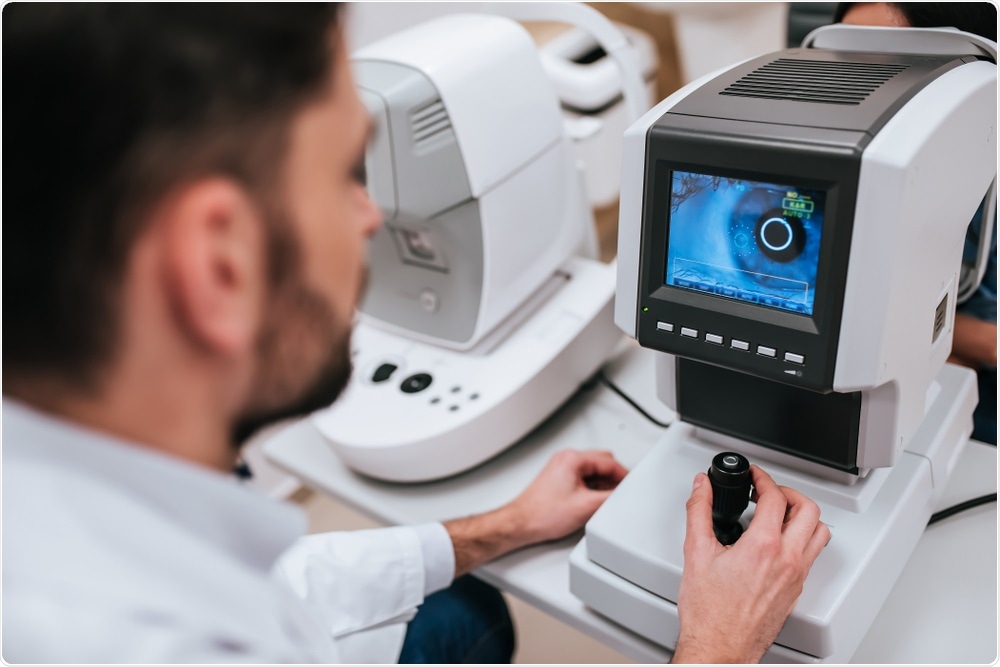
The team has developed a new plan for doctors to follow. Doctors working in the cornea clinic would prescribe fewer pills than usual for patients who had undergone surgery, which is when many people are first introduced to the drugs. They would also discuss proper opioid use with patients and the risks associated with taking the drugs.
Fewer pills could be taken without compromising pain control
As reported in the JAMA Ophthalmology, the findings revealed that fewer pills could be prescribed, whilst still helping patients to manage their pain adequately.The majority of patients had tablets leftover from the ones they had been prescribed after undergoing ophthalmic surgery on the cornea, a part of the body that has more nerve endings than any other.
Maria Woodward, from Kellogg Eye Center and health services researcher at the U-M Institute for Healthcare Policy and Innovation, says it was a combination of two recent policy changes - one by the institution and one by the state - that created this opportunity to learn about post-operative opioid use: "First the cornea division at Kellogg changed policy, decreasing the number of opioid tablets we prescribe. Second, the state of Michigan instituted a mandatory prescription monitoring program."
For the study, the researchers identified 82 patients who had undergone cornea operations and asked them about how many opioid tablets they had actually used post-surgery. The patients were also asked about any pain they had experienced, as well as how they had disposed of any remaining tablets.
Before and after the policy change
Prior to the policy change, cornea surgery patients had been prescribed an average of 18.8 tablets. When the researchers interviewed patients, they found that the average number of pills they had taken post-surgery was only 8. Patients generally tended to leave the remaining pills at home or carry them around with them.Since the policy change, the average number of pills prescribed was 6.6 and the average number of patients said they had used was only 4. Seventy percent of these patients also reported that the prescription had been adequate to manage moderate-to-severe pain and 22% said they had actually been given more tablets than they needed.
Only 7% of the group said they had not received enough medication to control their pain.
"We were very encouraged to see that even a dramatic reduction in the number of opioid pills prescribed had no negative impact on pain control," says Woodward. However, the study also revealed that none of the patients had discarded the leftover tablets as recommended – by taking them to a police station or health center.
This study shows we're making progress in the battle against opioid misuse. But we can do more to make sure that everyone knows how to prescribe them, use them and dispose of them safely."
Maria Woodward

What does the Centers for Disease Control and Prevention (CDC) say about opioids?
Opioids are commonly prescribed to help patients manage severe pain following traumatic injury or surgery. The medication is also prescribed to treat pain related to cancer and sometimes for pain unrelated to cancer, when other treatments have failed to work.In 2016, the CDC issued a guideline that recommended nonopioid approaches such as physical therapy to manage some, but not all, forms of chronic pain; the guideline for the treatment of chronic pain was not intended to apply to pain related to cancer treatment, palliative care, or end-of-life care.
In February 2019, the CDC reiterated its intentions regarding this guideline in a letter written by the agency’s Chief Medical Officer, Deborah Dowell:
The Guideline was developed to provide recommendations for primary care physicians who prescribe opioids for chronic pain outside of active cancer treatment, palliative care, and end-of-life care.
Because of the unique therapeutic goals, and balance of risks and benefits with opioid therapy in such care, clinical practice guidelines specific to cancer treatment, palliative care, and end-of-life care should be used to guide treatment and reimbursement decisions regarding use of opioids as part of pain control in these circumstances."
The letter was written to address concerns expressed by the National Comprehensive Care Network, the American Society of Hematology and the American Society of Clinical Oncology, that some people were avoiding paying for opioid prescriptions in situations that lay outside the scope of the guideline.
The original guideline had been clear in its intent, which was stated in the first sentence of the document and the American Physical Therapy Association also make it clear that opioid prescription is appropriate in some cases.
"The guideline is not intended to deny any patients who suffer with chronic pain from opioid therapy as an option for pain management… Rather, the guideline is intended to ensure that clinicians and patients consider all safe and effective treatment options," concluded Dowell.
Journal reference:
Woodward M. A., et al. (2019). Association of Limiting Opioid Prescriptions With Use of Opioids After Corneal Surgery. JAMA Ophthalmology. DOI: 10.1001/jamaophthalmol.2019.4432.






No comments
Post a Comment